Analyzing their ‘A’ game
A closer look at what makes the best ‘the best’
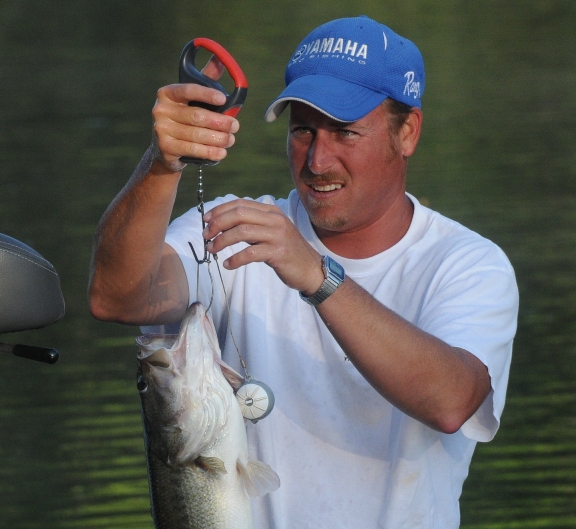
Tournament fishing is unlike any other competitive sport in the world. The number of uncontrolled variables in professional fishing far exceeds the variables found in other sports.
Therefore when a bass pro consistently performs at a high level against so many dynamic challenges – when they are on their `A’ game – it warrants a closer look.
As a fan and writer of the sport of professional bass fishing, I’m fascinated with what makes the best pros the best pros. At today’s top levels of tournament competition, pros have access to all of the best equipment money can buy. What intrigues me, however, are the intangibles – the visceral, the things beyond boats, motors, line and lures.
A pro’s fishing style, approach, decision making, motivation, belief about bass behavior and mental state are what count when their boat number is called on tournament day.
With that in mind, I’ve gone back through the 2010 season and pulled a few examples of what I witnessed as FLW pros performing at their highest level. What follows are some personal thoughts, opinions and analysis of FLW pros who are on their `A’ game.
Bryan Thrift and Andy Montgomery
This may sound a little odd, but watching either Bryan Thrift or Andy Montgomery fish during a tournament kind of depresses me. Why? Because I know if I fished every day of my life for a 100 years, I would still not have the mad skills these two young gunners possess. 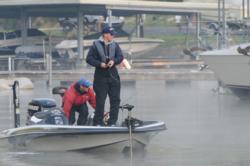
OK, for those who have actually seen me fish, make that 200 years.
Thrift, of course, won the FLW Angler of the Year this year, and Montgomery took a BASS Open win to his credit, but I will not waste words with both of their impressive tournament records. Instead, I would rather try to describe what, in my mind, makes them so deadly on the water.
First and foremost, let’s talk fishing speed. These two guys, who grew up fishing team tournaments together in the Carolinas, exhibit a fishing speed that is of a Kevin VanDam pace. Hold on, I did not say either one of these pros is better than KVD; all I’m saying is that in terms of covering miles of water in a given fishing day, both Thrift and Montgomery exhibit that unique hyperintensive ability to cover and evaluate quality water accurately at high rates of speed.
Their fishing is based on a simple premise: Make more presentations than anyone else in a given amount of time.
They do it with a lot of voltage – 36 to be exact – and many times there is still not enough pounds-per-thrust in the trolling motor to fish as fast as they want. In one event this year, Montgomery actually melted the terminal posts off his deep-cycle batteries by “keeping it on the floor” for so long.
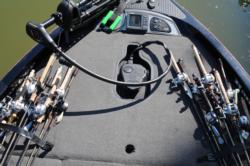 On their decks is a pile of rods, sometimes 15 to 20, each loaded with some kind of power technique – buzzbaits, swimming jigs, skipping jigs, flipping jigs, cranking jigs, crankbaits, toads, frogs and anything else you can reel fast on high-speed reels.
On their decks is a pile of rods, sometimes 15 to 20, each loaded with some kind of power technique – buzzbaits, swimming jigs, skipping jigs, flipping jigs, cranking jigs, crankbaits, toads, frogs and anything else you can reel fast on high-speed reels.
As they blitz down a bank they look like a buzz saw ripping into soft pine – casting, reeling and rotating rods with an aggressive tenacity.
Even without bites, they assess the water based on looks, color, clarity and “what should have bit.” They are hunting what Thrift calls “high-percentage water,” the rare two to 10 percent of the water that holds quality bass compared to the other 90 percent that does not.
Another impressive facet of their fishing is their incredible accuracy in terms of casting, especially skipping docks. Thrift or Montgomery could win a rock-skipping contest with a 1/2-ounce Shooter jig on the end of 7-foot rod, tied to 20-pound fluorocarbon.
They skip jigs into cracks and openings in floating docks that I couldn’t hit with a laser pen. And here’s the amazing part: They maintain such accuracy while the boat is in motion. Skipping a jig under a dock is one thing when the boat is sitting still, but to skip a 1/2-ounce jig through a mouse hole while the boat is moving at 5 mph, time and time again, is mind-blowing to watch. 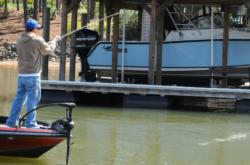
Also, they don’t necessarily fish long stretches of water, but rather just one dock in a line of docks, or one lay-down along a line of lay-downs, or one seawall in line of seawalls. They come off plane, put the trolling motor down, make five casts to the “high percentage spot,” pull up the trolling motor and go to the next “high percentage” spot.
Even each individual cast is a study in efficiency. Instead of working a particular lure all the way back to the boat, they work the lure in only the “high percentage” part of the cast – the darkest part of the shade, the gap in the grass, a particular fork in a lay-down – then reel it all the way back to the boat. In other words, in a 40-yard cast, only 3 to 10 yards of it is in “high percentage” water. They consider the rest of the cast a “waste of time,” so they burn it back to the boat for another presentation.
Montgomery’s knowledge of the shad spawn is beyond my comprehension. Just as the bass spawn can be segmented into different phases – prespawn, spawn and postspawn – Montgomery has the same understanding of the shad spawn.
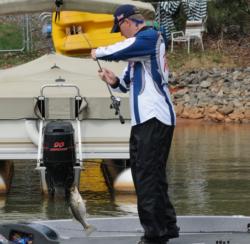
I once asked Montgomery if he was on a “shad spawn” pattern, and he replied, “Well, not really. The shad spawn is over; it actually is more of a `shad fry’ pattern.”
The point here is the fish these guys catch are unique to the way they fish. In other words, the fish these guys catch don’t come off a GPS memory card full of someone else’s numbers.
Finally, one last thing bearing mention: Both pros exhibit a down-to-earth humility in the face of some pretty lofty accomplishments at such a young age.
Next year Montgomery is off to fish the BASS Elites Series and Thrift will be fishing the FLW Tour. After watching them on the water this year, I’m pretty sure that no matter where they fish, their `A’ game has just begun.
`Deep thoughts’ with Mark Rose
If you are a ledge-lumbering bass on a TVA impoundment and it’s summer or early fall, chances are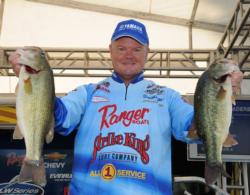 Mark Rose is watching you. Armed with a total of five depth finders in his boat, Rose brings a whole new meaning to the term “invasion of privacy” for offshore bass.
Mark Rose is watching you. Armed with a total of five depth finders in his boat, Rose brings a whole new meaning to the term “invasion of privacy” for offshore bass.
I realize Rose did not invent ledge fishing, and he’s not the first pro to win a tournament cranking ledges. I will contend, however, that Rose is certainly on the forefront of ledge-fishing tools and technology. He knows more than most about the new era of electronics as well as how and when to apply the latest in ledge-fishing lures.
His deep knowledge paid off handsomely this year with a runner-up finish at the Lake Guntersville FLW Tour event and a win at the FLW Series on Chickamauga.
Ironically, Rose used to be a river man who was much more inclined to jump sandbars and stump rows in an aluminum boat than to fish anywhere beyond the 5-foot contour line.
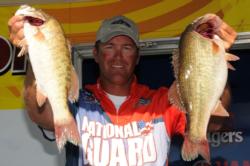 Then, several years ago, Rose met Randy Haynes of Counce, Tenn. For the last few years, Haynes has dominated the offshore ledges at Pickwick in tournament competition and has two EverStart wins to prove it.
Then, several years ago, Rose met Randy Haynes of Counce, Tenn. For the last few years, Haynes has dominated the offshore ledges at Pickwick in tournament competition and has two EverStart wins to prove it.
Once Haynes showed Rose what it was like to catch 20 pounds of bass off a ledge in about seven casts, Rose became consumed with the allure of ledge fishing. He began frequenting Pickwick, Guntersville and Kentucky lakes, spending countless hours graphing, scanning and fishing ledges, absorbing every last possible drop of offshore knowledge he could uncover.
When asked about the friendship, Haynes commented, “Yeah, I got Mark started on ledge fishing, but I can’t claim credit for where he has taken it from there. He has really put his time in on the water to better understand the power of these new electronics, and he’s done his homework on trying different lures on ledge bass.
“Since I showed him what a good ledge looked like several years ago, he has more than returned the favor by telling me some key things he has discovered about ledge bass that I didn’t know.”
Rose’s new obsession with ledges points to a larger phenomenon in successful tournament fishing: finding a technique that fires you up about fishing again.
In order to compete at the highest levels, it takes 100 percent dedication and focus. In the early stages of a fishing career, this comes naturally. But for pros who have been at it for the better part of 15 years, staying motivated can become problematic, and a new technique that rekindles the competitive fires can sometimes be what it takes to get the `A’ game going again. Such is the case with Mark Rose and ledges.
His approach to ledge fishing is impressive, starting with the management of information available from today’s modern electronic units. There is so much information available that Rose has two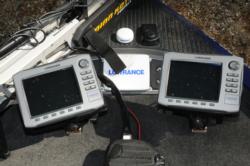 Lowrance HDS-8 units in his front deck so he can monitor every bit of it at all times.
Lowrance HDS-8 units in his front deck so he can monitor every bit of it at all times.
The primary reason Rose employs two units is to use two different GPS mapping software programs simultaneously and see their detailed differences side by side. According to Rose, one program sometimes contains topographical information that the other one does not and vice versa – almost like comparative ledge shopping in real time. In addition, he will “split the screen” on both units so he can also run StructureScan, DownScan and Sonar – or any combination of the three – at the same time.
While most anglers use StructureScan and DownScan to get a better look at physical structure on the bottom, Rose takes it a step further by using it to observe actual schools of fish and deciphering what mood the fish are in based on the StructureScan images.
For instance, on StructureScan, a tight school that is actively feeding looks different than a scattered school that is just “hanging out.” A pod of shad being “chased” looks different than a pod of shad that is “relaxed.”
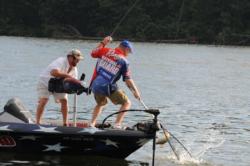
Knowing which lures to throw and when is another advantage Rose has gained on the ledges. He has spent large amounts of time on TVA lakes perfecting the tried and true football jigs and crankbaits while tweaking new-school offerings like the big spoon and swimbait.
Rose’s summation of ledge fishing on TVA lakes is that bass will bite anything when the current is running and the fish are feeding. When ledge fishing becomes a true challenge is when the current stops, the bass scatter, suspend and just kind of cruise ledges in a neutral mood.
Rose has found weekends to be brutal on TVA lakes because the current usually stops, the water clears (from no current), and weekend traffic and local fishing pressure take over.
“To me the real test of a great ledge fisherman is a guy who can still catch them on the weekends,” said Rose after winning the Chickamauga event this year. “I’m getting better at it, but in my opinion, I still have a lot to learn in terms of activating those nonactive schools.”
Rose will admit, however, that the big spoon and the swimbait are becoming real allies in terms of getting a neutral bass to bite and consequently firing a school up.
Haynes agrees.
“I used to be more of a jig man,” Haynes said. “But Mark has taught me a lot about that spoon and the crankbait for getting a reaction bite and igniting the school.”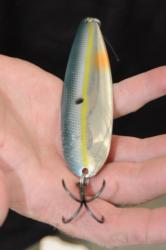
With his last win at Pickwick, Haynes noted one of the keys to his victory was being aware of how fishing pressure essentially pushed schools up and down ledges from one holding spot to the next. Though the primary spot might already be covered up with other boats, knowing where those fish are going to move to and waiting for them farther down the ledge on a less-pressured spot is where the ledge battle is headed to next.
And there’s little doubt Rose and Haynes have had many discussions about that very topic.
Cracking Ehrler
As an outdoor writer, I am supposed to be able to explain how, why, when and where top pros catch their bass, which is exactly why Brent Ehrler drives me crazy – he makes my job hard. That’s right – in 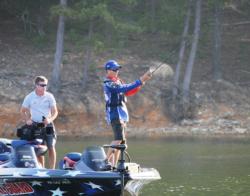
order to keep up with how Ehrler is catching his bass from week to week, I have to actually work!
Let me explain: Back in the day I grew up following pros who were specialists. Denny Brauer and Tommy Biffle – flippers. Guido Hibdon and Shaw Grigsby – sight-fishermen. David Fritts and Rick Clunn – crankers. Even the great Kevin VanDam is primarily regarded as a “power” fisherman. You get the point. For the most part pros define their area of expertise, and when the conditions play to their strengths, they do well.
But Ehrler … that Ehrler, now which category does he go in? None! This guy is all over the map in terms of techniques. For instance, here is a review Ehrler’s six FLW Outdoors wins:
2004 EverStart Series Championship, Lake Cumberland: casting a jig to shallow wood.
2006 Forrest Wood Cup, Logan Martin: skipping a shaky head under docks.
2009 FLW Series Western, Lake Havasu: sight-fishing.
2010 FLW Series Western, Lake Shasta: wacky rig and drop-shotting.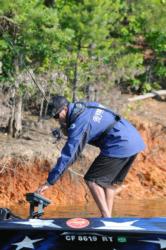
2010 FLW Tour, Table Rock: swimming a grub.
2010 FLW Tour, Lake Ouachita: topwater walking bait and balsa prop bait.
Like I said, all over the map.
After a couple of lengthy conversations with Ehrler this year, I’ve come to realize that Ehrler’s style is, for the most part, in stark contrast to Eastern conventions, which is really no surprise given his Western roots.
While many pros drive to a tournament with a solid idea of the pattern they are going to seek out, Ehrler’s primary goal on the water is not to get locked into any pattern, specific type of cover or lure. He strives to “fish the moment,” and that means not attaching the way we humans think fish “ought to behave” to his fishing.
“Bass have biological and environmental forces acting on them that we are never going to understand,” Ehrler explained. “Sure, they have to eat and they spawn, but above and beyond that, we really don’t know what a fish is thinking from day to day, so I don’t get caught up in trying to analyze it. Forcing bass to be a logical creature or making assumptions about bass behavior only leads me astray.”
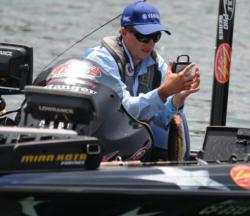
Ehrler’s best example of this occurred at the 2008 National Guard Open on Lake Norman, where Ehrler finished sixth.
During practice, bedding and cruising bass were eating sinking lures – shaky heads and small jigs. But at some point during the tournament, that bite started to wane, Ehrler picked up a weightless wacky rig and instantly got bit. It did not take him long to realize the fish had quit hitting bottom baits and were now “looking up” in the water column to eat.
“I don’t know why they changed,” Ehrler said. “Maybe it was fry-guarding, maybe it was fishing pressure, maybe it was some other biological force we don’t understand. All I know is it was a definite change in behavior, and it made a huge difference in getting bit or not. Had I been totally locked in on sinking baits, I probably would not have done that well in the event because that bite was going away fast.”
And that is what drives Ehrler: detecting small changes in bass’ behavior and taking advantage of them before others discover what’s going on.
Ehrler says his biggest enemy in that process is not letting past history influence his fishing process during a current tournament. For instance, if FLW returned to Norman at the same time the next year, Ehrler’s past success with a wacky rig would be eating away at him. While other pros might welcome some successful past history to fall back on, it’s not exactly a good thing for Ehrler.
Ehrler said: “That’s the absolute toughest battle for me as pro – trying to stay open to something new when you have a successful history with something else on that body of water and falling victim to it. Things are always changing – the weather, the water, the fishing pressure – and as a result there are always new opportunities arising.”
With this said, it’s almost as if Ehrler welcomes the 1,001 uncontrolled variables found in bass fishing because they keep things fresh. Instead of going to a tournament practice with exact lures and specific sets of water in mind, he prefers to stack 15 to 20 different rods on the deck, spread out the buffet and let the fish tell him what they’re interested in.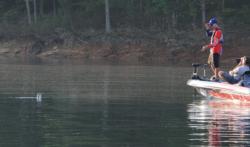
“I don’t like preconceived notions or plans,” he admitted. “I like to figure it out as I go.
“I hardly ever have less than 12 rods out on the deck,” he continued. “I want everything out where I can get to it. When I get an intuitive feeling about something, I want to be able to try it, right then, even if it’s just one cast. Sometimes just one cast with something is all it takes to discover a new option has opened up. That’s what happened at Norman with the wacky rig and at Ouachita this year with the prop bait. Most of the tournaments I’ve done well in I’ve discovered that certain little `tweak’ in the tournament.”
Also in order to keep things new and fresh, Ehrler has a penchant for fishing new water every day. Though his Table Rock win was an exception – he camped on the same place for four days – most of his success comes from fishing new water each day like he did at Ouachita.
And “new water” to Ehrler means water that others have not fished as well. Fishing pressure is something that Ehrler is acutely aware of and avoids as much as possible.
Ehrler likes detailed GPS mapping, but not for the reasons you might think.
“GPS mapping is awesome if you’re just one guy out there fishing a lake,” he explained. “But when you’re fishing against 149 other guys that have that same technology, trust me, any good-looking contour has had every lure in the box dragged over it.
“So I essentially avoid the best-looking places,” Ehrler laughed. “I’ve had some really great practice days on the obvious stuff, but I never went back to them. What’s the point? Everyone else has fished them too.
“That’s one reason I didn’t do well at Guntersville this year,” he added. “In order to do well there, you have to rotate the same five or six holes all day with other boats, and that’s just not me. It still amazes me they catch them that way there, but they do.”
The ability to read the sonar returns of electronics is more important to Ehrler than GPS mapping. Again, from his perspective, the contours represent the constant that everyone can see, but sonar returns represent what’s happening “in the moment.”
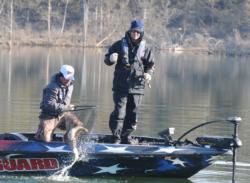
He points to his phenomenal win at Table Rock this year – where he caught nearly 70 pounds of bass off one magical spot – as an example.
“If you were to look at the contour mapping of the area where I won the tournament, your eyes would lock onto this one beautiful point that falls right off into the channel,” Ehrler explained. “But that was not the magic spot. Instead, it was on a flatter, more subtle portion of the creek channel that looked like nothing on the GPS mapping.
“I found it with my graph while running back into the creek,” Ehrler continued. “My graph just lit up with fish activity. I turned around, checked it out, caught a couple of bass and didn’t think much more about it. I had no idea what I was on until the first day of the tournament.”
So why weren’t the fish on the “text book” point that broke off into the channel located just a couple hundred yards away?
Ehrler has no idea and does not even venture a guess.
“Like I said, they are fish; we can’t explain why they do what they do,” Ehrler said. “All I know is that’s where they were at the time, and I was not going to argue with it.”